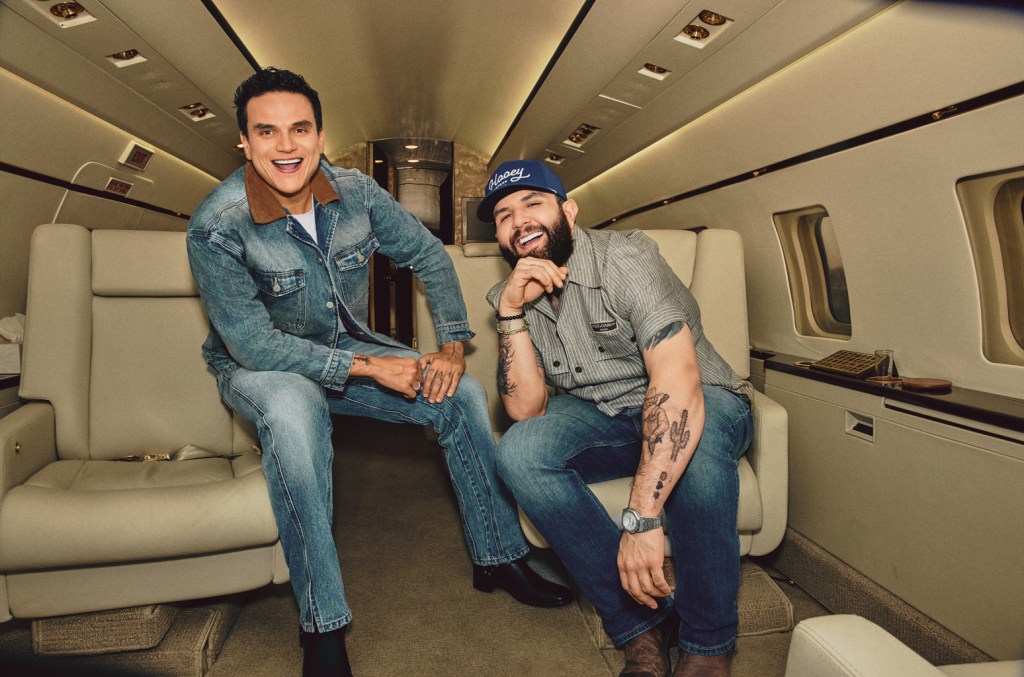Minutes before midnight on Saturday at the Petronio Alvarez Festival in Cali, Colombia, the sound system stopped working with La Herencia de Timbiquí onstage. The crowd, estimated at 45,000 by festival staff, hardly missed a beat – and continued singing for several minutes.
It was not surprising that the audience, a mix of Colombians and visitors from the U.S., Europe and elsewhere, knew the band’s material; they are among the few groups from the South American country’s musically-rich Pacific coast that is the focus of the “Petronio,” as it’s known, to reach tens of millions of streams on Spotify. But outside Colombia, even as Latin music gains increasing traction at a global scale, relatively few fans are familiar with the rich diversity of Afro Latino music that comes from Colombia’s Pacific coast.
The Petronio, named after Petronio Alvarez — a railroad worker and composer of a song that has become a hymn to the region, “Mi Buenaventura” — may help remedy that.
The event, which concluded its 28th edition on Monday, is held in Cali – the city with the second-highest Black population in Latin America, after Bahía, Brazil. Many of its Black residents immigrated here from the coast, driven by the drug war and other violence. They brought with them a rich cultural and musical heritage that includes genres steeped in folklore, like the brass-heavy chirimía and the marimba-driven currulao.
But those genres have never gained the prominence of others — like vallenato, cumbia or even the contemporary hybrid of rap and reggaetón.
Petronio has gained a higher international profile with each year; city government organizers estimated the 2024 festival would draw up to a half-million attendees, after beginning in 1997 with only five thousand locals in the stands. And this year, a visit from Prince Harry and Meghan Markle, who both spoke from the stage as guests of Colombian vice president Francia Marquez — the country’s first Black vice president — put new eyes on the event.
Markle spoke in perfect Spanish from the stage and the royal couple not only danced to and heard music from the Pacific coast, but also attended events focused on challenges facing the people of the historically-marginalized region.

Yuri Buenaventura
Jesse Pratt López
Still, the question some ask is: What will it take for the Afro-Colombian sounds of the Pacific coast to reach a global audience?
One person drawn to the music was Inma Grass, founder of Spanish music company Altafonte, acquired by Sony Music in January.
Altafonte’s roster includes La Herencia de Timbiquí among its artists, and Grass came to Cali both to “brainstorm” a campaign to celebrate the band’s upcoming twenty-fifth anniversary and to meet and hear new artists. En route to the airport on Monday, Grass told Billboard that her stay of twelve days was her first visit to Colombia. “I’m shocked by the musical richness [of the Pacific coast],” she said. “It has global potential.”
Musicians offering special performances outside the event’s contest format of five categories included Nidia Góngora, also from the Pacific town of Timbiquí. Góngora has toured for years in Europe and the U.S., and is known for her groundbreaking collaborations with the English electronic producer Quantic, as well as roots music recordings with her group, Canalón de Timbiquí (the group earned a Latin Grammy nomination in 2019 for the album De Mar y Río.)
When Quantic, whose real name is Will Holland, began speaking with Góngora about collaborating in 2017, she first asked him to visit her homeland. “I was afraid that it would be an extractive relationship,” she told Billboard on the second day of the festival, sitting in a side room of the seafood restaurant Viche Positivo that she runs in Cali (viche is a liquor made from sugar cane). Góngora took Holland to her family’s house on the coast. “He came back with more respect,” she said, explaining that he “took on a commitment” to the marimba and percussion in her roots.
The result: Curao, an album with six tracks that have each been streamed more than a million times on Spotify, in which “two sounds come together without either one taking away attention from the other,” said the singer. The name refers to a traditional blend of viche and herbs.
Such musical blends are increasingly found at the Petronio in the “Libre” or Open category of competition.
The six-day fest also included after-hour events, such as one featuring Alexis Play, a singer from the Pacific coast who fuses horns from chirimía with electric guitar, conga drums – and rap. Even so, his concert included a brief chirimía presentation beforehand, as if to remind the audience about the artist’s musical roots.
Many musicians and others at the festival in Cali were concerned about these roots, and their makers, being lost without attention or support. A highlight was the first-night concert led by marimbero Hugo Candelario, who gathered a 26-person ensemble featuring a handful of marimba maestros, the oldest being 87-year-old Genaro Torres – and their young relatives. Candelario founded Grupo Bahía, which won the first “Petronio” in 1997.
The Guapi-born musician also spent several days during this year’s Petronio speaking to whoever would listen about the need for everything from video recordings of the maestros explaining their techniques, tuning and other musical knowledge, to music schools on the Pacific coast for keeping traditions alive and developing future talent. His audiences included Colombian government officials and a delegation from the New Orleans Jazz & Heritage Festival.
“The danger is that the ancestral magic and wisdom go to the grave with the maestros,” Candelario said. “The festival is not a panacea,” he added – meaning it can’t solve these problems by itself.
Yuri Buenaventura has told the story more than once of living penniless in Paris as a young man, and going on to sell more than a million copies of his album Herencia Africana, including a salsa version of the Jacques Brel song, “Ne Me Quitte Pas.” Now living in Cali and working on projects through a foundation he founded that include recording musicians from the Pacific coast, he worries that the festival might become “a caricature of itself” if musicians from the region don’t have a way to learn the ins and outs of the music industry, about such matters as production, marketing and songwriting royalties. This lack of knowledge also endangers the music, he said.

Petronio Alvarez Festival
Jesse Pratt López
Altafonte’s Grass addressed the tension between conserving musical and other cultural traditions and reaching a global audience. “Many musicians are recuperating their roots, and mixing them with genres that young people listen to,” she said. “You can’t be a purist,” she added — drawing on the example of Spain’s flamenco, which drew many such debates for decades, only to see the artist Camarón de la Isla fuse the traditional form with other contemporary sounds, reaching great success.
“I think we have to conserve traditional groups and sounds, while at the same time I love the way music keeps evolving,” she said. “If it doesn’t, it’s not going to connect with new generations – mixing trap, rap, jazz, reggaetón, everything they feel in their world.”
One category above others at the festival lent itself to these sorts of fusion – the “Open” competition. After midnight on Monday morning, Chureo Callejero — a group of young musicians from Tumaco blending marimba, rap and snare drums — were announced as this year’s winners in the category.
Within hours of the victory, a person presenting himself as an Italian visitor to the festival wrote a comment under one of the few YouTube videos of the group, with slightly more than a thousand views: “We want your music on Spotify! Long live Petronio! Long live Colombia!”






